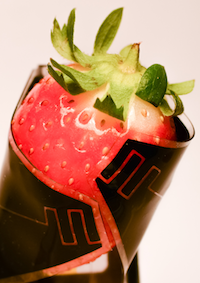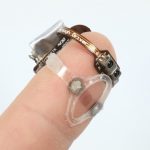The EPFL-LMTS develops:
- Elastomer-based actuators and sensors
- Wearable Haptics and Haptic displays
- MEMS and Printed Microsystems
CURRENT RESEARCH TOPICS
1. Miniaturized Elastomer Actuators
 We are widely recognized for our innovative fabrication techniques and elegant applications of elastomer-based transducers using electrostatic forces (eg DEA, HAXELS, EHD pumps)
We are widely recognized for our innovative fabrication techniques and elegant applications of elastomer-based transducers using electrostatic forces (eg DEA, HAXELS, EHD pumps)
Our focus is on complex soft machines and soft robots.
2. Wearable Haptic Displays
 We develop arrays of low-power flexible actuators for tactile and haptic displays for VR, AR and to allow blind and visually-impaired users to access dynamic graphical information.
We develop arrays of low-power flexible actuators for tactile and haptic displays for VR, AR and to allow blind and visually-impaired users to access dynamic graphical information.
3. MEMS and Printed Microsystems (Dr. Briand)

3.1 Soft sensors and labels
We develop flexible sensors on cellulosic and polymeric substrates for a variety of applications, such as smart packaging, environmental and health monitoring, IoT, wearables and implants. Physical, chemical and biological sensors have been demonstrated and integrated into single or multi-sensing systems incorporating microfluidic, electronic, and wireless functionalities, among others.
3.2 Additive and digital manufacturing of smart objects
We research on additive manufacturing processes with a reduced environmental impact addressing ink formulation, their printing and curing/sintering. Digital 2D printing (i.e. inkjet) and 3D printing (i.e. DIW) enable the customisation of microsystems. 3D structural electronics based on a hybrid approach, embedding together printed and discrete functional components (i.e. Si chips), is also studied.
3.3 Sustainable electronics and microsystems
Additive manufacturing of bio-sourced and renewable materials is a promising approach for the development of greener electronic systems by enabling, after service life, their ecoresorbability and/or recyclability. We are addressing the substitution of non-degradable and difficult to recycle materials to allow either biodegradation or facile recycling, targeting a higher level of circularity.